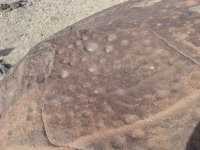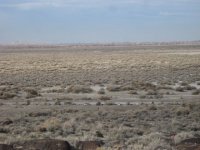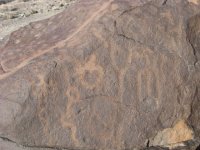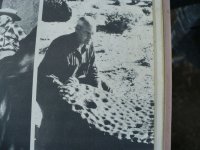IMAUDIGGER
Silver Member
- Mar 16, 2016
- 3,398
- 5,195
- Primary Interest:
- All Treasure Hunting

I'm not going to get this story 100%, however the story goes...
This medicine rock was used by Native American doctors AKA "medicine men" since the beginning of their creation. The primary function of the rock was to control the weather.
The salmon run was extremely important to the river tribes, both as a food source and spiritually. The Salmon will not migrate up the river until there is some rainfall. If you have a long dry fall..you will have a late season Salmon run.
The Indian doctors would perform a ceremony involving the divots which would solicit the Great Spirit to bring rain. The rock was covered to stop the rain. The linear gouges are said to have been used to bring on snow fall...other perpendicular gouges stopped the snow fall.
In the late 1880's a local miner paid a medicine man to make it rain so they could start their mining season. All of the flumes, ditches, and diversions were constructed, but there was not enough water. It was also said to have been a very late salmon run.
I forget the price, but it was probably $15 in gold.
The ceremony was performed (presumably uncovering the rock and doing something with the pits or divots). The next day it started raining.
It rained long and heavy enough that the rivers flooded. All the miner's work was destroyed by the flooding.
The local tribe got very angry at the medicine man because he caused such a devastating flood.
The "rain rock" was buried in order to stop the flooding.
This story was recorded in a historical publication, some time in early 1900.
In the late 1940's the state was constructing a new highway and the workers found the rain rock in their excavations.
It was moved to a museum and has been covered from time to time during floods.
One time during a heavy weight boxing fight in New York City, a telegraph was sent requesting the rock be covered so as to prevent it from raining back east. The request was honored and the fight was completed without rain.
Another story is a log truck bumped the rock as it was driving into some truck scales and a log fell off shaking the rain rock. The next morning everyone woke up to 2 feet of snow (on April 1st)....
I find it very interesting to look at this rock and envision the hard times that must have occurred waiting for the fall run of Salmon...sick of venison and acorn soup.
If I run across the old story, I'll post it up as a correction to my version.
Last edited:
Upvote
0









